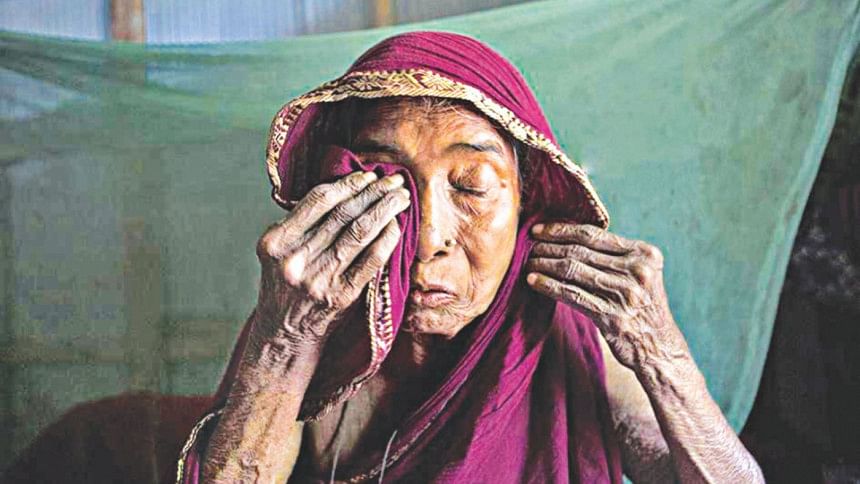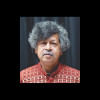Silent death, unrecognised

Wednesday, May 4, was a great day for eight-year-old Mari Copeny. At her request, President Obama visited Flint, her home town in Michigan. For more than two years, more than 100,000 residents have been drinking tap water supplied by the city that was laced with high-levels of lead. It happened after the city officials switched from Detroit water to unfiltered Flint River water, all in the name of saving money.
In a letter, Copney told the president, "The water here smells like bleach and old fish."
I don't know how water laced with arsenic smells or tastes. You will have to ask Anowara Begum of Iruain village in Lasksham, Comilla. A woman in her 60s, Anowara and thousand others like her have been drinking this water for the past several years, exposing themselves to serious diseases. Like lead, arsenic can cause serious health conditions, and even death.
In Flint, many children may have already been affected by lead poisoning, causing physical and mental damages. However, there is good news for Flint's residents. The federal government has stepped in, pouring millions of dollars to fix the problem. As steps are taken to change the pipelines one house at a time, bottled water is being trucked in – in millions – for local residents that will hopefully last for the next several months. On a separate track, legal action is being taken against those found responsible. A city official and two state environmental officials have already been indicted. More could soon be implicated.

Mari has good reason to feel hopeful. But the same can't be said for Anowara Begum. A recent report by Human Rights Watch, a US-based non-profit group, warns that as many as 20 million people in Bangladesh continue to drink arsenic-laced water, resulting in the death of an estimated 43,000 people every year. If the problem remains unaddressed, the report claims that between 1 and 5 million children born between 2000 and 2030 could eventually die due to exposure to arsenic in drinking water.
When the US-based organisation issued its 110-page investigative report, the government readily dismissed it, calling it baseless. No one has died from arsenic poisoning in Bangladesh, government officials claimed. "This must be the work of an NGO," the minister in charge of local government theorised.
Human Rights Watch, not really an NGO that can be off-handedly dismissed, actually spent several weeks in five Bangladeshi villages, interviewing dozens of villagers and analysing data from nearly 125,000 government water points. The minister challenged news reporters of Dhaka to find one person affected by arsenic. The report actually documents several, their names and pictures splashed all over the internet. Anowara Begum is one of them.
Both WHO and UNICEF had painted a similar picture. Some 40 years ago, UN agencies like UNICEF and World Bank were in the lead to install tubewells for supplying fresh water to villagers in Bangladesh. Three decades later, the good tubewells turned bad, no longer able to pump safe water due to high levels of arsenic at the lower levels of ground water. In the 1990s, when the problem was identified, UNICEF readily admitted its failure and promised to take action. Jointly with the government, it singled out the bad tubewells, marking them with red paint. Villagers were advised not to drink water from these tubewells. Over 20 years have passed, the problem still remains; people continue to suffer, even die, largely because they have no other option.
It is an old problem that made headlines in foreign newspapers after the World Health Organization termed the arsenic problem in Bangladesh "the largest mass poisoning of a population in history." Very few newspapers in Dhaka took note of the warning. In the early 1990s, The New York Times spent several weeks travelling all across Bangladesh before publishing a front-page report detailing the silent tragedy wreaking havoc in much of Bangladesh's rural areas. It followed up with several subsequent reports. I still remember the story of a young woman, who had patchy marks on her face and feet. Her husband no longer thought she was pretty, so he dumped her and took a second wife. "I now work as a maid servant at my husband's house," she said, still thankful that he did not chase her out.
Richard Pearshouse, the lead author of the Human Rights Watch report, told me a similar story. In one of the villages, he had met a young woman who was pregnant. She had dark patches all over her body. Worried, she went to see a doctor at the upazila health complex who told her that it was important that she avoid drinking water with arsenic in it. However, she told Richard that she can't follow this advice because "there is no government tubewell around here that works."
Richard told me that the woman was acutely worried for her health and her children's health- she knew that the water she gives to her eight month old daughter will soon start affecting her baby's health. She said, "If there was a government tubewell I could use, even if it was far away, I would go there for my sake and also for my daughter's sake."
Why does Bangladesh – not just the government but the society as a whole – seem so oblivious to the plight of those affected by arsenic in drinking water? Richard had a simple answer: arsenic doesn't affect Bangladesh's cities, which get their water from safe sources. It only affects rural areas and mostly those who are poor.
"In rural areas, it affects the poorest of the poor, because they can't afford to move, or install deep tubewells that might give them arsenic-free water. Many of these people labour for a living – it's hot work under the sun all day long and they drink more than the average amount of water. The poor people are those most affected by arsenic and these are the people that the government is failing. Instead, some politicians are giving tubewells to their political allies and their supporters."
In some ways, this situation is not that different from Flint, where those affected are mostly poor and belong to minority groups. Almost half of Flint's population is African-American and most of them live below the poverty line. Michael Moore, the documentary filmmaker, recently wrote in Time that the situation in Flint is basically racial in nature. "This is a racial crime. If it were happening in another country, we'd call it an ethnic cleansing," he wrote.
Mari and others in Flint finally have some good news. The most powerful man in the world, the President of the United States, came knocking on their door and sipped safe water with some of them. He even gave Mari a hug.
There is no such luck for those in Bangladesh, who are still forced to drink arsenic-laced water. In fact, the afore-mentioned minister does not even want to acknowledge that someone like Anowara Begum exists.
The writer is a journalist and author based in New York.

 For all latest news, follow The Daily Star's Google News channel.
For all latest news, follow The Daily Star's Google News channel. 



Comments